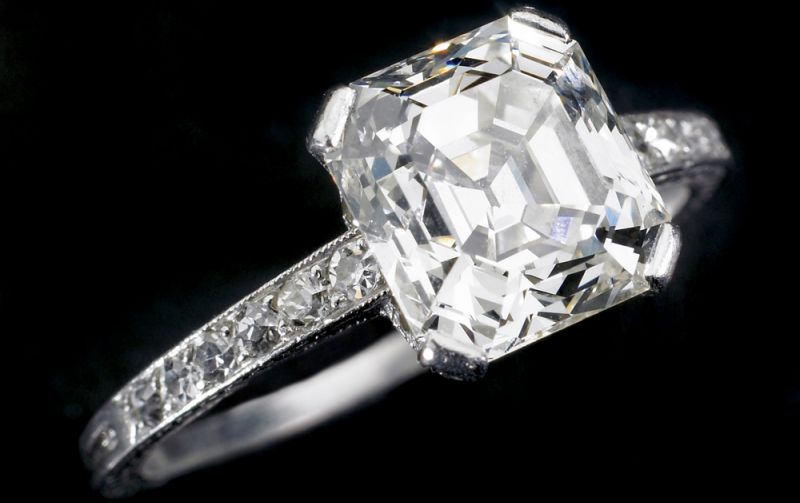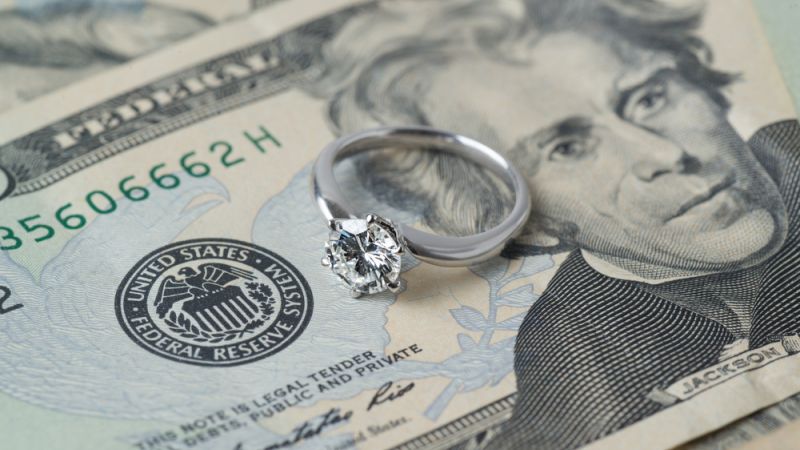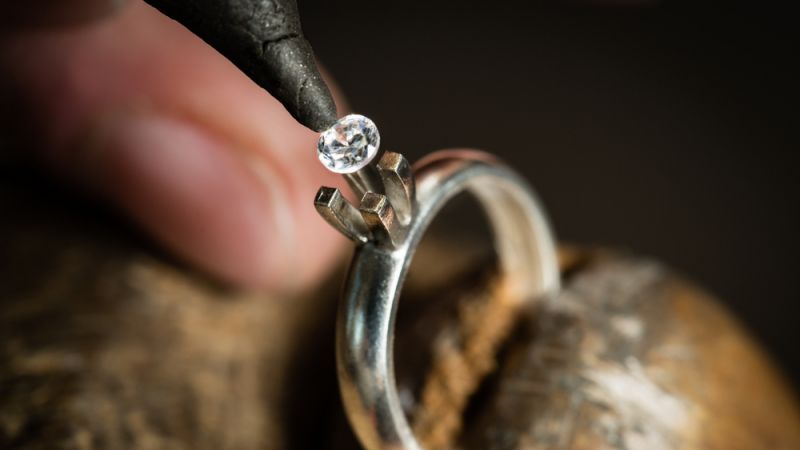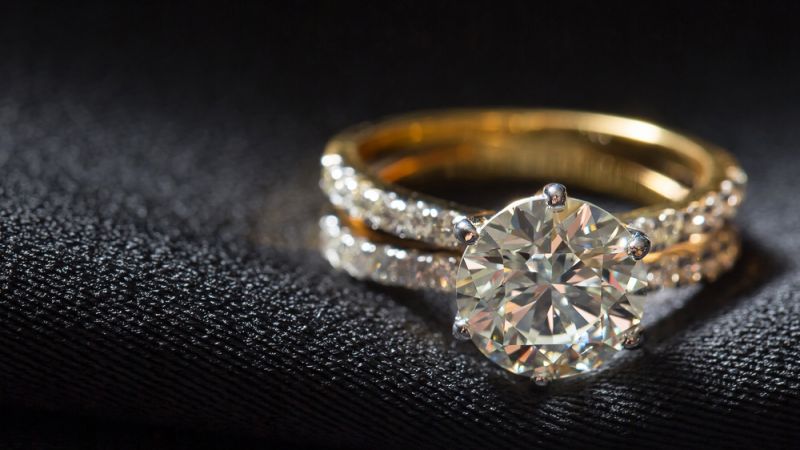If you’ve been on the hunt for the best deal on a diamond, it’s likely that you’ve visited various websites and merchants. In your search, you may have encountered enhanced diamonds without even realizing it. Allow us to shed some light on what enhanced diamonds actually are.
Enhanced diamonds are diamonds with a high number of inclusions or lower color grades that have undergone treatments to enhance their color or clarity. These treatments make them more affordable compared to other types of diamonds.
It is the responsibility of a reputable jeweler or diamond dealer to disclose whether a diamond has been enhanced, as it has a significant impact on the diamond’s price and quality. Unfortunately, selling enhanced diamonds as natural ones is an age-old scam.
Continue reading to delve deeper into the world of enhanced diamonds.
DESIGN YOUR OWN ENGAGEMENT RING: START WITH A SETTING OR START WITH A DIAMOND. IT’S REALLY UP TO YOU!

Enhanced Diamonds
In the world of diamonds, there are three primary classifications: mined diamonds, lab-grown diamonds, and enhanced diamonds.
Mined diamonds are naturally extracted from the earth, while lab-grown diamonds are created in a laboratory. Enhanced diamonds, on the other hand, are diamonds that have been treated by humans to improve their color or clarity with the aim of maximizing profits and selling lower-quality stones.
Enhanced diamonds typically start as diamonds with significant inclusions or poor color and undergo specific treatments to enhance their appearance. While these treatments have certain drawbacks, they are designed to reduce the visibility of imperfections or enhance the diamond’s color.
It’s important to note that enhanced diamonds are distinct from natural diamonds, which remain untreated and in their original condition.
Diamond enhancements can be categorized into two main types: color enhancement and clarity enhancement.
Color enhancement involves procedures to make the diamond appear whiter or to give it a specific color, such as yellow or green. On the other hand, clarity enhancement focuses on reducing the visibility of inclusions within the diamond.
Clarity enhancement techniques include external laser drilling, special laser drilling, deep boiling, and fracture filling. These techniques aim to minimize the visibility of inclusions in the diamond. They can have an impact on the diamond’s structure and brilliance, as they involve filling “cavities” or openings with a substance to make the inclusions less visible.
External laser drilling involves using a laser to create a small opening in the diamond to reach black impurities or inclusions. The diamond is then deep boiled to remove the black substance and clean out the inclusion. This process can create tunnel-like inclusions that may affect the diamond’s durability.
Special laser drilling is a deceptive treatment that involves burning a thin layer on the diamond’s surface to access the inclusion. This method is designed to make the drilling appear more natural and is followed by bleaching treatments to remove undesirable inclusions. The thin coating created by special laser drilling can affect the diamond’s durability and quality.
Deep boiling is a widely used technique that involves boiling the diamond under extreme pressure in an acidic medium. It is performed on diamonds with black impurities that reach the surface and aims to make the inclusions less visible. Deep boiling has no significant impact on the diamond’s price and is an accepted treatment method.
Fracture filling is a process where inclusion holes are filled with a small amount of silicon and other substances. It works best for transparent “feather” inclusions and aims to make them nearly undetectable. However, the filling can affect the diamond’s appearance and brightness, and over time, it may deteriorate or even fall out. Reversing the process is challenging once a diamond has been filled.
Color enhancement involves treatments to change the diamond’s color. High-pressure, high-temperature treatments can make slightly colored diamonds appear whiter, or they can enhance the hue to achieve specific tones like yellow or pink. The HPHT (high-pressure, high-temperature) color enhancing process applies a thin coating of chemicals or polymers to the diamond’s surface using a cubic press. Diamonds treated with this method are labeled as such and are considered less valuable than natural diamonds.
It’s important to note that these enhancements permanently alter the diamond’s natural structure and can affect its brilliance and lifespan over time. The Gemological Institute of America (GIA) does not endorse certain treatments, and vendors are legally required to disclose if a diamond has undergone any treatments.
Enhanced diamonds are generally less valuable than natural diamonds due to the non-natural treatments they have undergone. Their enhanced features are expected to fade over time, impacting their brilliance and overall value.

Pros Of Purchasing An Enhanced Diamond
Choosing an enhanced diamond over a natural gemstone comes with a significant cost advantage. Enhanced diamonds are typically priced 30-50 percent lower than their natural counterparts.
One noticeable improvement with enhanced diamonds, particularly fracture-filled ones, is their enhanced appearance after treatment. The treatment helps mask small fissures and feathering, making them less visible to the naked eye. Additionally, bleaching chemicals are used to remove any color, giving the diamond a brighter, more appealing look.
However, when considering an enhanced diamond, it’s crucial to also think about its long-term durability.

Cons Of Purchasing An Enhanced Diamond
While the cost savings of choosing an enhanced diamond are significant, it’s important to be aware of the potential long-term risks associated with these gems.
When it comes to repairs, it’s crucial to inform your jeweler if your diamond has been enhanced. Heating the piece during repair work can cause damage to the enhanced diamond, as many fillers used in the treatment process are not able to withstand high temperatures. Repolishing can also harm the gem, with some fillers leaking or creating additional imperfections.
Cleaning is another aspect to consider. Ammonia-based jewelry cleaners can affect the enhancement treatment, so it’s advisable to use ammonia-free cleaners for jewelry containing enhanced gemstones. Steam and ultrasonic cleaning methods can also pose risks, as the heat and prolonged exposure may degrade the filler and diminish its clarity.
Visible filler is a common characteristic of fracture-filled enhanced diamonds. While the aim is to make the stone appear flawless, the fillers used can sometimes create their own imperfections, such as fluid-like materials or air bubbles within the gem.
Color stability is another concern. While enhancement treatments aim to make the diamond colorless, there is no guarantee that the enhanced hue will last, especially for fracture-filled diamonds. The chemicals used in the treatment can lead to initial or eventual discoloration, with some fillers changing in color over time.
Additionally, exposure to sunlight can have an impact on enhanced diamonds. Tests have shown that certain fillers can deteriorate when exposed to long-wave UV radiation.
Considering these potential risks, it’s important to weigh the cost savings against the long-term durability and maintenance requirements of an enhanced diamond.

Conclusion
To recap, enhanced diamonds are gems that undergo treatment to enhance their color or clarity. While they are cheaper than other types of diamonds, they do not offer long-term value and can deteriorate in quality over time. Reselling enhanced diamonds can also be challenging.
If you have a limited budget but desire a larger diamond, purchasing an enhanced diamond may be an option. However, it’s important to understand that you may be paying more than what the low-quality gemstone is truly worth.
Based on several studies, it is generally concluded that purchasing enhanced diamonds is not worth the cost and potential difficulties. Ultimately, the decision whether to buy an enhanced diamond or not is up to you and your personal preferences.


